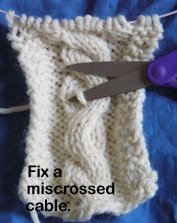.
The last class I took was Bioprinting: 3D Printing Body Parts on FutureLearn.
I "only listened" -- I watched all the videos, read the written bits, and took the quizzes, but did not do any of the activities.
3D bioprinting is a fascinating new door opening up into human capability to deliberately repair injury and replace missing parts.
3D printing makes possible collaboration across huge distances (California to South Africa, say). If all collaborators have 3D printers, they can share the files which describe how to print something, can both print the object, and can both hold (essentially) identical copies of the same object in their hands. A person in one place who is doing the functional specification, and a person in another place who is doing the programming/computer-aided-design, can work closely together in real time. (Imagine how much longer it took when the test object had to be mailed from the fabricator to the person who knew how it needed to function!)
3D printing makes possible incredibly fast prototyping. Designs no longer need to be sent out to be produced. Objects can be printed in-house, observed and tested, and changes can be made much more quickly than previous methods/processes allowed.
For body parts -- if a cancerous heel bone needs to be removed, a scan is made of the other (healthy) heel bone. The scan is mirror-imaged (to make a right heel bone from the image of the left heel bone). A replacement "bone" can be printed in plastic, for proof-of-concept, and it can then be printed in metal. Several times, maybe, as the first one is way too heavy, and they work toward a very strong, but much lighter version. Then the replacement can be installed in the person.....
Printing is done via extrusion, and also by "ink" jet. "Ink" jet printing is capable of printing living cells, embedded in the supportive solution needed to keep those cells happy and healthy, *on the substrate necessary to support and shape the replacement tissue*. ALL AT ONCE. (Lots of nozzles, printing different things...) Is this astonishing, or what?
There exists a hand-held pen/printer, that can write replacement cartilege into a joint. !!! The surgeon exposes the joint, removes damaged cartilege, and uses the pen to write cells/support-fluids/scaffolding on the parts of a joint where damaged cartilege was removed. !!! At present this is only being used in "equine models" (read: race horses with arthritis!), but I believe it is expected to be available for use in people relatively soon (5-10 years?).
This video was not part of the class, but the doctor shown using the device was part of the class, and the other guy in one still pic was the primary instructor. (I wonder if Stephen Hawking narrates the video?)
Replacement skin (all the varied layers) will be printed, layer by layer, using cells from the injured person to make the various kinds of new skin cells.
3D printers are ... printed by 3D printers. So the tools used to make the end results are, themselves, being made and refined incredibly quickly.
3D printers can print an astonishing variety of materials..............
Mind-blowing stuff, yes?
FugureLearn classes, in my experience, are very light-weight. I signed up for this one before we went to Denver, but didn't start listening to it until last week. A person could listen to the whole class in less than one focused day.
If any of this sounds interesting to you, I urge you to have a look. Bioprinting: 3D Printing Body Parts This class is free -- if you sign up and then find you are too busy, or not that interested, you can just stop watching. No expense, no penalty, no downside......
So much cool stuff, with so much potential, is going on in biology these days. I love learning about this cutting-edge stuff!
.
Subscribe to:
Post Comments (Atom)

















No comments:
Post a Comment